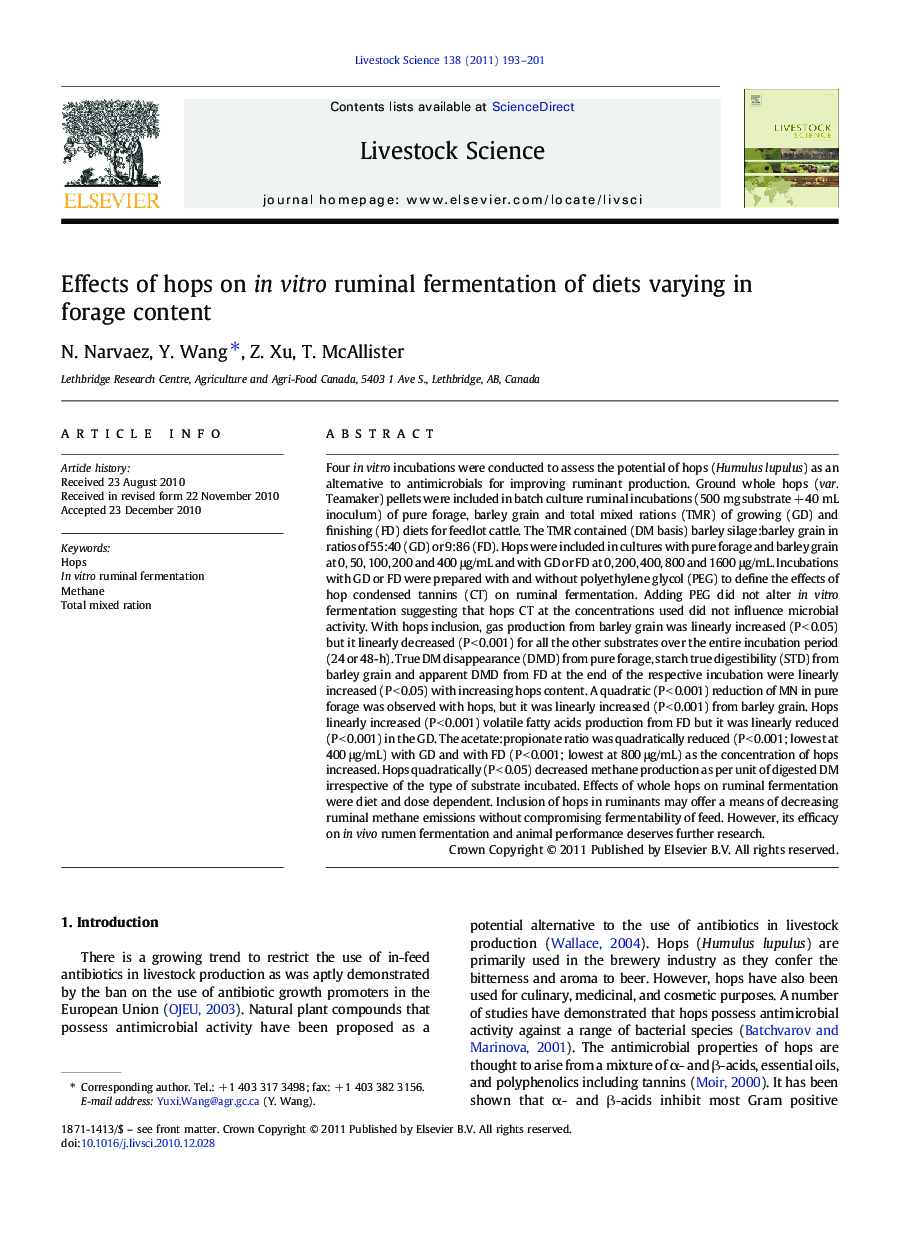| کد مقاله | کد نشریه | سال انتشار | مقاله انگلیسی | نسخه تمام متن |
|---|---|---|---|---|
| 2447495 | 1553994 | 2011 | 9 صفحه PDF | دانلود رایگان |

Four in vitro incubations were conducted to assess the potential of hops (Humulus lupulus) as an alternative to antimicrobials for improving ruminant production. Ground whole hops (var. Teamaker) pellets were included in batch culture ruminal incubations (500 mg substrate + 40 mL inoculum) of pure forage, barley grain and total mixed rations (TMR) of growing (GD) and finishing (FD) diets for feedlot cattle. The TMR contained (DM basis) barley silage:barley grain in ratios of 55:40 (GD) or 9:86 (FD). Hops were included in cultures with pure forage and barley grain at 0, 50, 100, 200 and 400 μg/mL and with GD or FD at 0, 200, 400, 800 and 1600 μg/mL. Incubations with GD or FD were prepared with and without polyethylene glycol (PEG) to define the effects of hop condensed tannins (CT) on ruminal fermentation. Adding PEG did not alter in vitro fermentation suggesting that hops CT at the concentrations used did not influence microbial activity. With hops inclusion, gas production from barley grain was linearly increased (P < 0.05) but it linearly decreased (P < 0.001) for all the other substrates over the entire incubation period (24 or 48-h). True DM disappearance (DMD) from pure forage, starch true digestibility (STD) from barley grain and apparent DMD from FD at the end of the respective incubation were linearly increased (P < 0.05) with increasing hops content. A quadratic (P < 0.001) reduction of MN in pure forage was observed with hops, but it was linearly increased (P < 0.001) from barley grain. Hops linearly increased (P < 0.001) volatile fatty acids production from FD but it was linearly reduced (P < 0.001) in the GD. The acetate:propionate ratio was quadratically reduced (P < 0.001; lowest at 400 μg/mL) with GD and with FD (P < 0.001; lowest at 800 μg/mL) as the concentration of hops increased. Hops quadratically (P < 0.05) decreased methane production as per unit of digested DM irrespective of the type of substrate incubated. Effects of whole hops on ruminal fermentation were diet and dose dependent. Inclusion of hops in ruminants may offer a means of decreasing ruminal methane emissions without compromising fermentability of feed. However, its efficacy on in vivo rumen fermentation and animal performance deserves further research.
Journal: Livestock Science - Volume 138, Issues 1–3, June 2011, Pages 193–201